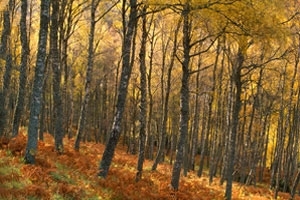 In 1985, the Forestry Commission remit for woodland management moved away from being entirely about timber production and included wildlife conservation. During the 1990s, the importance of biodiversity increased: by the end of the decade the new concept of multipurpose woodlands was revealed in the Government's UK Forestry Standard.
In 1985, the Forestry Commission remit for woodland management moved away from being entirely about timber production and included wildlife conservation. During the 1990s, the importance of biodiversity increased: by the end of the decade the new concept of multipurpose woodlands was revealed in the Government's UK Forestry Standard.
National and regional strategies for woodland planting and management have maintained the principle of multiple sustainable aims. For example, the latest delivery plan for England's woodlands includes climate change adaption as a primary aim.
Nature conservation remains a key strategic objective and specific biodiversity aims can be achieved by accessing government grants for planting new woodlands or managing existing ones. However, wildlife conservation in woodlands is not just about national strategies and regional frameworks. Research-based conservation work is undertaken by NGOs across the country and by many woodland owners not always via the grant system.
While most UK woodland is not actively managed, more and more of it is. The driver for this often expensive work can be wildlife conservation directly. However, game management, in particular the release of pheasants for shooting, also provides an incentive and financial underpinning for woodland management. It is also one of few examples of sustainable woodland management. Our recent pheasant research has concentrated on documenting the positive and negative impacts on habitat quality and wildlife of woodland management for pheasants and of released pheasants themselves. We have also undertaken some work on the impacts of deer on woodland habitat quality, which has implications for deer management.
Woodland top tips
- In new woodland planting, the inclusion of adequate shrub and medium height cover is essential to provide key habitats for birds.
- Shrub cover established around woodland and ride edges will have greatest effect.
- Shrub and medium height species are often more susceptible than young trees to grass competition, or damage by rabbits and deer. Ensure adequate protection and weed control.
- Avoid non-native shrub species as natives will provide equally good cover.
- Particularly in small new woodlands, avoid dense shade - casting tree species such as beech, chestnut, or sycamore will suppress low and medium heigh habitats.